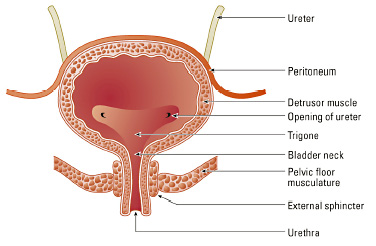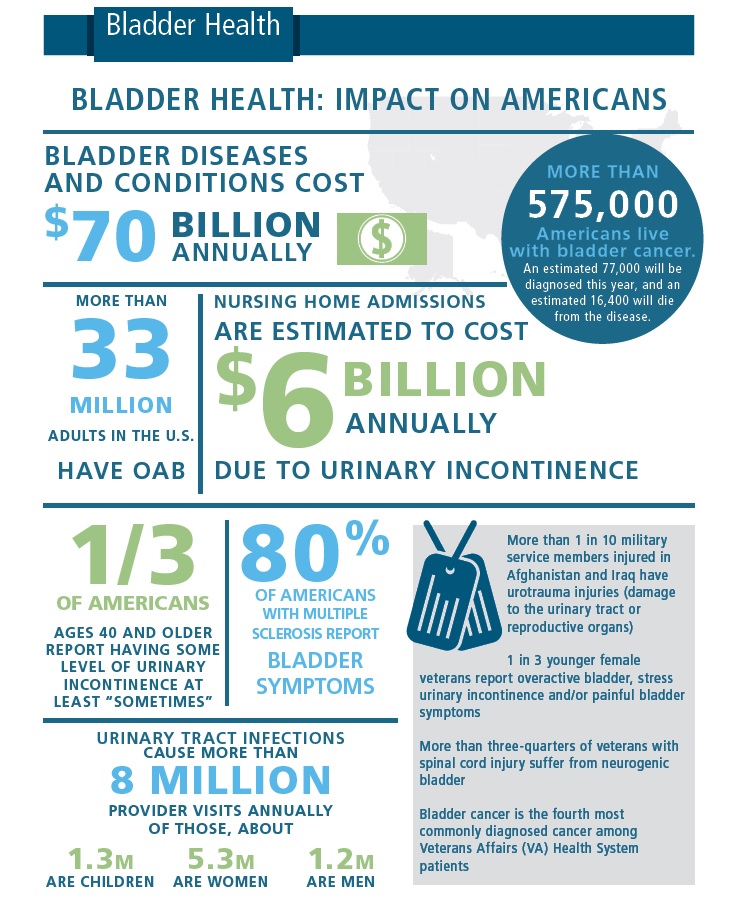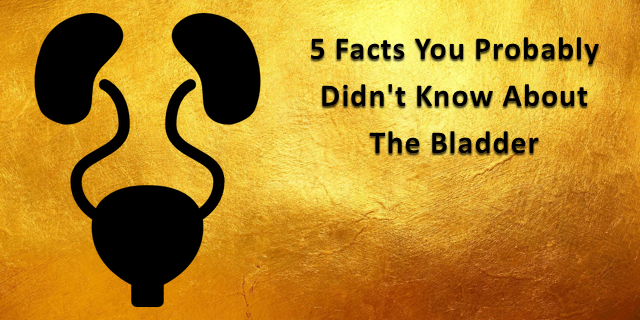Because of its lowly role in the human body, we think about our bladders only when something is going wrong or when we have to go really, really badly.
So, November has been set aside as Bladder Health Awareness month. Here is a short review of bladder anatomy and function as well as common problems that can happen.
![]() Your bladder is connected to your kidneys by two ureters. It is a hollow organ designed to store urine. It can hold between one and one-half and two cups of urine or around 400 ml to almost 500 ml. The inside of the bladder is lined with a layer of transitional epithelial cells. Wrinkles on this inner lining called rugae help your bladder to expand.
Your bladder is connected to your kidneys by two ureters. It is a hollow organ designed to store urine. It can hold between one and one-half and two cups of urine or around 400 ml to almost 500 ml. The inside of the bladder is lined with a layer of transitional epithelial cells. Wrinkles on this inner lining called rugae help your bladder to expand.
![]() The tube through which the urine leaves the bladder is called the urethra. A woman’s urethra,
The tube through which the urine leaves the bladder is called the urethra. A woman’s urethra,  is shorter than a man’s. Bacteria and other microbes have a much shorter distance to travel, making women more susceptible to urinary tract infections than men.
is shorter than a man’s. Bacteria and other microbes have a much shorter distance to travel, making women more susceptible to urinary tract infections than men.
![]() As the bladder fills, nerve signals are sent to the brain. Once it is full, those signals from the bladder are responded to by messages to the muscles of the urethra to relax and the muscles of the bladder to contract and squeeze. If all the signals are in the proper order, you have a normal urination…hopefully in the toilet. Although we don’t control our kidneys, we do have control over our bladders.
As the bladder fills, nerve signals are sent to the brain. Once it is full, those signals from the bladder are responded to by messages to the muscles of the urethra to relax and the muscles of the bladder to contract and squeeze. If all the signals are in the proper order, you have a normal urination…hopefully in the toilet. Although we don’t control our kidneys, we do have control over our bladders.
What happens when the signals go awry or muscles don’t respond at the right time? If urine is left in the bladder, infections can occur. If muscles in the pelvis (pelvic floor muscles) or sphincter muscles are weak, incontinence occurs.
Overactive bladder (OAB) and stress urinary incontinence are two common bladder problems. OAB refers to a group of symptoms where the urge to urinate occurs more frequently than the actual need. Increased day-time and night-time urgency are symptoms. Unfortunately, urine leaking is a part of OAB. According to the Urology Care Foundation, many more people have OAB than are treated for the condition. The embarrassment factor and myth that this condition is normal for older men and women means people who could be helped suffer unnecessarily.
Stress urinary incontinence is a different condition. Sneezing, coughing or laughing (stress) can bring about leakage. There are both non-surgical and surgical treatment options. One treatment, called Kegel exercises, can be performed daily to strengthen the pelvic floor muscles.
![]() Bladder cancer often starts in the inner cell layers of the bladder. Bladder cancer is more common in men than in women. The primary symptom is blood in the urine that is not accompanied with pain on urination.
Bladder cancer often starts in the inner cell layers of the bladder. Bladder cancer is more common in men than in women. The primary symptom is blood in the urine that is not accompanied with pain on urination.
The Urology Care Foundation provided this infographic for Bladder Health Awareness Month.







After having external beam radiation I have had blood clots come out from my bladder. Does anyone know anything about this condition and if there is a way to help it so it does not continue. Is there anything I can do about it? It’s painful, puts me on edge as I never know when it could happen.
Very nice aricle
Such a useful article – like to treasure…we from Healthcare advisory service in Executive search need to upgrdae our knowledge…
How does one excute the Kegel exercise?
Thanks for sharing great information… Urinary tract infection is a very frustrating problem with female nowadays. I would suggest those female drink more water in a day and stay hydrated
I really need to pee right now, but the line is sooo long
My patient and I been trying to fill the cup, now 3hrs later the ask as to just take home the cup and do it at home, 3hrs later and 3 full liters of water ended up looking with each other askin